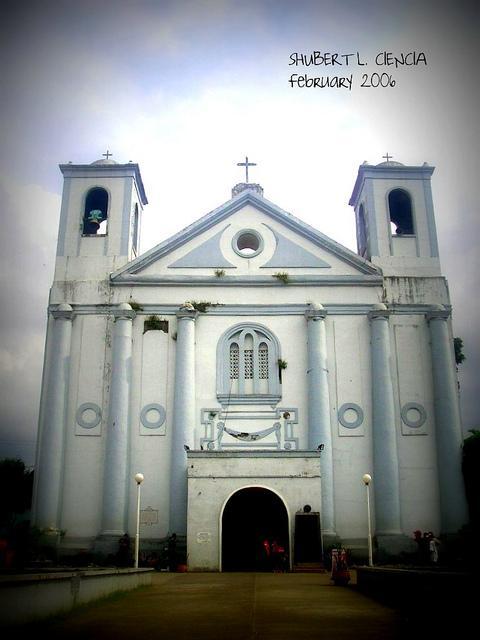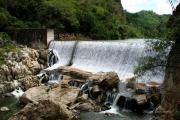
St. James Parish Church, Ibaan
The Catholic church of Ibaan is among the oldest in the province of Batangas. According to the parish records, an illustrious Augustinian priest named Fr. Manuel Grijalbo, the first parish priest of Ibaan, took the initiative of establishing the first stone church. The original plan of the present church was drawn by an architect named Luciano Oliver. It has a "cruciform" design that looked like a cross or crucifix, an iconic column facade in towers for the height. The attractive columns in the form of triangle pediment are at its highest peak in front. Construction was started in 1854 and was finished in 1869. The bell towers and church frontage were completed in 1876.
The church became too old to withstand the natural disasters that hit the town of Ibaan. It underwent several years of renovation and in their desire to beautify it, the church didn't look good and original as it was. The natural beauty of the old stone material was lost. Fr. Pedro Galente, OSA (Order of Saint Agustine) in his article, Angels in Stone, was saddened by the change in appearance of the church when it was renovated.
The parish church that was started by Fr. Manuel Diez Gonzales in 1853 was completed by Fr. Bruno Laredo, OSA. In 1865, the two towers were constructed. The completion and painting inside the church happened when Fr. Vicente Maril, (OSA) was the parish priest. The town owes Father Vicente Maril a debt of gratitude for his introduction of classic Tuscanic architecture in the design of the church columns, and but also for his strong encouragement for the planting of coffee trees in the town. Ibaan had 8,000 inhabitants at that time. The convent of artistic and solid construction was constructed by Rev. Fr. Pedro Cuesta. The four bridges of adobe stones were constructed through the initiative of the Augustinian fathers.
The adobe stones used were cut from a special quarry south of the town along the Ibaan River, a fast-flowing river in those times called "Matandang Tipakan". The ancestral home of the author Mayor M. Mercado was also constructed from the same quarry where the stones used in the construction of the church buildings mentioned above were quarried. It is said to be the oldest house in the Poblacion, proven by the fact that the size and shape of the stones used in this house are the same as those used in the construction of the church.
On May 29, 1890, around the same moment as the Fall of Bataan, there was a strong earthquake that destroyed the church. Fr. Francisco Alvarez, (OSA) was responsible for the renovation of the church from 1891-1896.
When the Diocese of Lipa was founded in 1920, there was a shortage of priests. Monsignor Joseph Petrelli, the first bishop of the Archdiocese invited the Congregation of the Oblates of Saint Joseph, an order of Italian missionaries, to send people to the Philippines.
Getting There
Batangas City is 2 1/2 hours away from Manila when using the old inter town route. Using the STAR Tollway route, one can reach Batangas City in an hour and a half. Tanauan City is about an hour away, and in between Tanauan City and Batangas City, one will find Lipa City. ALPS The Bus, Inc. is one of the many bus companies that travels the said route.
Travellers can take air-conditioned buses to Batangas City. Those who want to go to Nasugbu, Calatagan and Lian towns (Matabungkay) can pass via the Tagaytay route.
Travellers going to Puerto Galera can take direct air con buses from Manila (Cubao) to Batangas pier. The best services are BLTB (every hour) and JAM transit (also every hour) from the Kamuin Cubao bus station. Sometimes, esepcially during peak hours, buses run every 30 minutes. The last stop is a Batangas pier (ask the conductor before hand) from where one can take a ferry to [Puerto Galera]
When driving one's own vehicle to Tanauan-Lipa-Batangas City, travelers will pass through the South Luzon Expressway, then the STAR Tollway and can just follow the directional signs along the highway.
For short trips in the desired destinations, passenger jeepneys abound, and then tricycles.
Getting Around
You can use passenger jeepneys to go to different parts of the province, but you can use tricycles for short trips. Tricycles could take you to the exact place that you want to go because jeepneys have routes like buses do.










